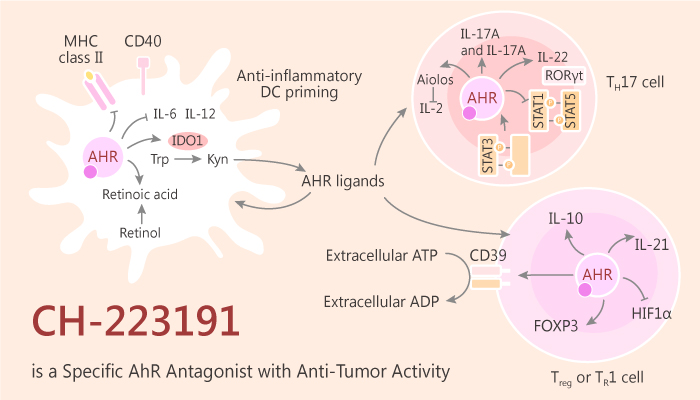In previous blog, we described CH-223191 as an antagonist of aryl hydrocarbon receptor (AhR). CH-223191 reduces the aggravation of arthritis induced by smoking in mice via aryl hydrocarbon receptor. Today, I’d like to say something about the anti-tumor activity of this antagonist.

2,3,7,8-Tetrachlorodibenzo-p-dioxin (TCDD) is a widespread environmental pollutant with many toxic effects, such as endocrine disruption, immunotoxicity and cancer. These are mediated by TCDD binding to and activating the aryl hydrocarbon receptor (AhR). In this regard, targeting the AhR using novel small molecule inhibitors is an attractive strategy for the development of potential preventive agents.
A study from Sun-Hee Kim firstly discovered and identified CH-223191 by screening a chemical library composed of approximately 10,000 compounds. CH-223191 also potently inhibited TCDD-induced AhR-dependent transcription. In addition, CH223191 blocked the binding of TCDD to AhR and inhibited TCDD-mediated nuclear translocation and DNA binding of AhR.
For instance, in guinea pig intestinal adenocarcinoma (G16L1.1c8) and mouse hepatoma (H1L1.1c2) cells, CH223191 preferentially inhibits AhR-dependent reporter gene expression in cells from various species by TCDD. Additionally, CH223191 inhibits TCDD- but not BNF-dependent AhR nuclear translocation. In this regard, CH223191 preferentially inhibits TCDD- but not BNF stimulated in vitro AhR transformation and DNA binding.
Moreover, another study described that CH223191 is also a ligand-selective antagonist of the Ah (Dioxin) receptor.